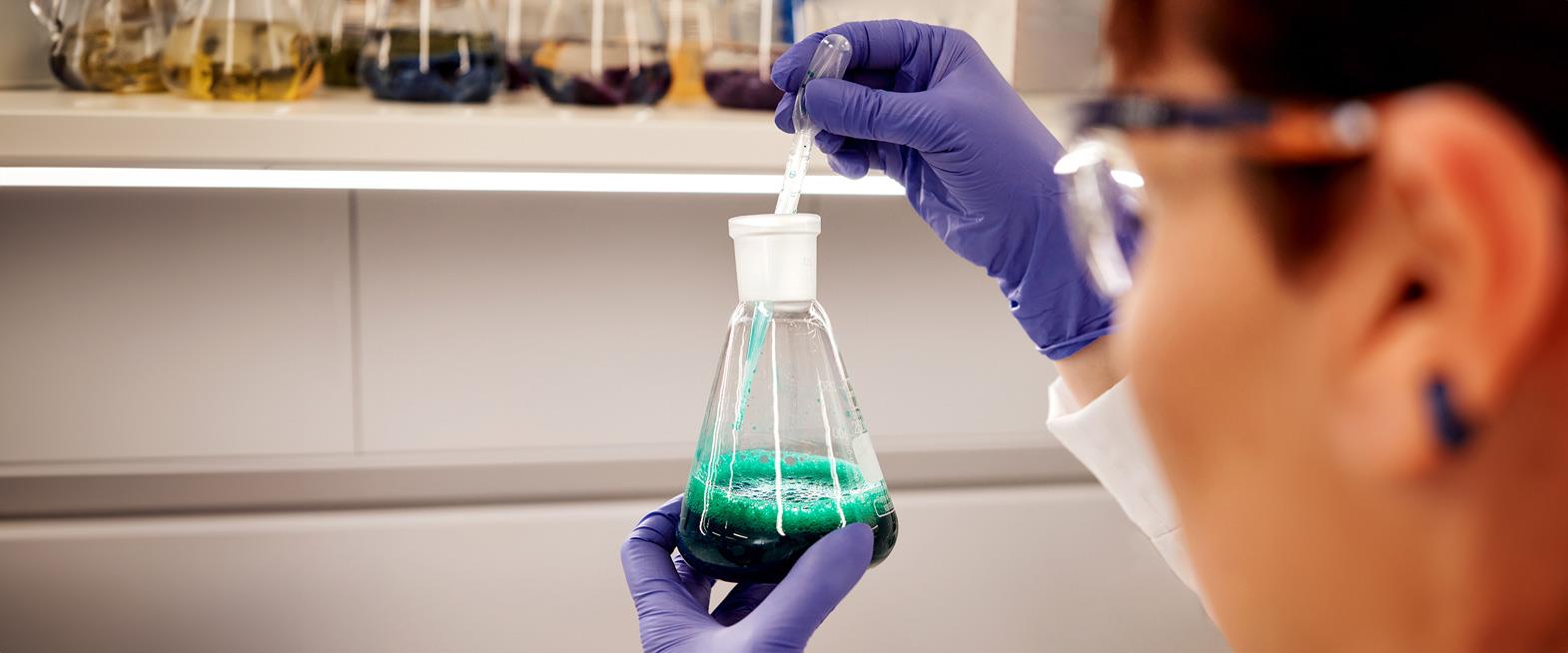For over 30 years, the OEKO-TEX® Association, supports customers and companies along the textile and leather supply chain with its certifications.
In an interview with Fibre2Fashion, John Murphy, Group Technical Director Europe of Hohenstein, one of the founding members of OEKO-TEX®, explains the process and significance of OEKO-TEX® ECO PASSPORT certification system.

1. Can you briefly explain the genesis of the OEKO-TEX® ECO PASSPORT certification system and its primary goal?
The production of apparel, footwear, textile, and leather is chemically intensive. Input chemistry has a significant effect on product safety, the environment and circularity. Greener chemistry proactively removes hazardous substances before they enter supply chains. It is far more effective than rejecting unsafe finished goods or reversing environmental damage. A testing and certification system enables suppliers to select better chemistry and prevents toxins and impurities from entering factories, products, and ecosystems.
2. How does the ECO PASSPORT system stand out from other certifications in the textile and leather industry?
OEKO-TEX® ECO PASSPORT targets chemicals, colourants and auxiliaries used to manufacture apparel, footwear, and textile. The multi-stage verification process analyses whether chemical products and individual ingredients meet specific requirements for sustainability, safety and statutory compliance. The ECO PASSPORT requires CAS number screening and analytical verification (testing). Because it is part of the traceable OEKO-TEX® system, ECO PASSPORT certified chemicals reduce risk and testing costs for downstream customers. ECO PASSPORT limits are directly tied to STANDARD 100 and OEKO-TEX® LEATHER STANDARD product certifications for harmful substance safety and harmonised with OEKO-TEX® STeP facility certification for worker and environmental protection.
3. Can you elaborate on the three-step verification process and explain its significance in ensuring sustainable production?
In addition to the previous answer, I would like to mention that OEKO-TEX® ECO PASSPORT has amended its ECO PASSPORT certification options considering the ZDHC Conformance Guidance 2.0.
Level 1: This will stay mostly the same and will still include screening and analytical testing.
Level 2: Now includes the On-Site Visit additional to the Self-Assessment.
Level 3: Now includes chemical hazard assessment (CHA) capability plus evidence that Level 1 and Level 2 principles for ZDHC MRSL Conformance are fulfilled.
Up until now the OEKO-TEX® ECO PASSPORT certification consisted of a mandatory CAS-number screening and laboratory analysis. Self-Assessment and On-Site Visit were voluntary. While the On- Site Visit will remain optional, the Self-Assessment will become a mandatory requirement for every customer who has not yet passed it for their production sites.
4. What challenges do manufacturers commonly face during the ECO PASSPORT certification process?
OEKO-TEX® ECO PASSPORT certification is part of a modular system, and we try to make the process as user friendly as possible to achieve Eco Passport certification. If hazardous substances are detected, we collaborate closely with chemical companies to help identify the source and resubmit fresh samples to achieve certification.
Contaminations although not intentionally added can also be the result from manufacturing issues, handling procedures, reaction to transport vessels or changes made by a supplier. Most ECO PASSPORT applicants, although previously unaware of the issue, will use the feedback and collaboration to resolve the situation.
The OEKO-TEX® ECO PASSPORT failure feedback serves as a “mini alternatives assessment” for chemical suppliers. They are in the best position to know why their formulation contains a chemical of concern and what could be a safer alternative. Many failures have led to improvements in the chemical company’s supply chain or processes.
5. How are the criteria and threshold values for the ECO PASSPORT determined and updated?
There is an active Working Group for the Eco Passport which sits throughout the year and closely follows up on our developments and new regulations. In many cases the limit values for the STANDARD 100 go beyond national and international requirements. The criteria catalogue is updated at least once a year and expanded with new scientific knowledge or statutory requirements. As it can be challenging for manufacturers and customers to keep an overview of the legal situation concerning harmful substances, our experts from the OEKO-TEX® institutes provide this service. At the start of each year, the OEKO-TEX® Association updates the applicable test criteria and limit values for its range of certifications including the Eco Passport (Please see
New_regulations_2023_ECO_PASSPORT_EN.pdf (oeko-tex.com) Additionally, each year the OEKO-TEX® ECO PASSPORT working group advises which substances will be “Under Observation” for the following year, which can be considered as a candidate list.
6. How is the extension process for the certificate carried out? Are there any specific conditions or evaluations involved?
The OEKO-TEX® ECO PASSPORT certificate is valid for one year and can be renewed for another year under the same ECO PASSPORT number on request. During every third renewal the testing intensity is carried out the same way (full testing) as in the first certification. During the other renewals, a reduced testing programme is carried out. For those renewals, only new parameters and lowered limits are tested, minimising the testing costs up to 10 per cent of the last full certification. Parameters which had a restriction should also be retested since they are at a higher risk. If the customers want to add products to an existing ECO PASSPORT certificate, we call it an extension, where the customer pays for the additional products.
7. How does the ECO PASSPORT align with platforms like the ZDHC Gateway and BHive App from GoBlu?
OEKO-TEX® STeP customers will get easy access to the ZDHC Gateway and the ZDHC Supplier to Zero programme, which will increase their readiness for the OEKO-TEX® STeP certification. Wastewater testing for OEKO-TEX® STeP directly translates into a ZDHC ClearStream, simplifying customer requirements. STeP customers already benefit from the OEKO-TEX® x The BHive®’s partnership. It enables customers to digitalise their chemical inventories. Through The BHive® customers can conduct ZDHC Performance InCheck and conformance checks against the ZDHC Gateway, the largest database of chemical products certified against the ZDHC MRSL. ZDHC and OEKO-TEX® are working on establishing data sharing processes that will stand to benefit customers (e.g., in the ECO PASSPORT process and through listing on the ZDHC Gateway). This collaboration will strengthen data quality, making performance and impact evaluation increasingly more credible. In summary, the ZDHC Gateway and BHive App from GoBlu are available for the publication of certified products, including all associated certificates.
8. In your experience, what are the real-world benefits manufacturers have witnessed after obtaining the ECO PASSPORT certification?
Many chemical suppliers have robust systems and procedures for managing their dyestuffs and chemicals. Reviewing formulations to prevent chemicals of concern from being intentionally used is a necessary step towards chemical management. However, a review of what is thought to be in a formulation can miss the mark if the ingredient list is incorrect or if there has been contamination from impurities or incorrect storage. A robust and reliable certification system requires both CAS number ingredient document checks and regular testing. Finding and eliminating hazardous substances and contaminants improves the end consumer product, lessens environmental impact, and helps chemical suppliers improve their formulations as well as preserving their reputation.
9. With evolving environmental concerns and the dynamic nature of the textile industry, how do you see the ECO PASSPORT evolving in the coming years?
Protecting people and the planet with greener chemistry requires proactive elimination of hazardous chemicals. It involves transparent communication, worker training, careful monitoring, and storage. It means global monitoring of laws, restricted substance lists and suppliers. These efforts are especially challenging in the long and complicated supply chains most common in apparel, footwear, leather and textile industry. No company can do it alone. All of this is easier through collaboration.
One example of this is the recent announcement of our collaboration with ZDHC. We have joined forces to enhance sustainable chemical management and cleaner chemistry principles. Our aim is to empower the textile/apparel and leather/footwear industry to improve its environmental impact by optimising industry guidelines and solutions through collaborative efforts. With this partnership we seek to drive sustainability while meeting the needs of chemical formulators/manufacturers, suppliers, brands, and retailers. The goal is to create a cohesive approach to sustainable chemical and product management across global value chains. Although OEKO-TEX® has been collaborating with ZDHC for over five years, this formal agreement will augment the benefits of both organisations to brands and their suppliers.
10. How has the reception been from brands and consumers regarding the ECO PASSPORT? Do you see a rising trend in its adoption?
OEKO-TEX® ECO PASSPORT is an independent certification system for chemicals, colourants and auxiliaries used in the apparel, footwear, and textile industries. ECO PASSPORT uses a systematic screening and testing approach to promote compliance, confidence and cost efficiency. In just five years, it has grown to cover approximately 26,000 chemical products that meet the strict criteria for ecologically responsible manufacturing. Brands and factories value ECO PASSPORT as credible third-party chemical validation and suppliers of those chemicals use the built-in feedback mechanism to improve products and processes.
11. How can brands effectively communicate their ECO PASSPORT certification to their customers to instil trust and highlight their sustainability approach?
OEKO-TEX® ECO PASSPORT is used within the industry, but there are two specific standards for brands and retailers to communicate their sustainability approach. OEKO-TEX® STANDARD 100 is one of the world’s best-known labels for textiles tested for harmful substances. It stands for customer confidence and high product safety. If a textile article carries the STANDARD 100 label, you can be certain that every component of this article, i.e., every thread, button and other accessories, has been tested for harmful substances and that the article therefore is harmless for human health. OEKO-TEX® MADE IN GREEN is a traceable product label for all kinds of textiles and leather products that have been manufactured in environmentally friendly facilities under safe and socially responsible working conditions. The MADE IN GREEN label also reassures consumers that the textile or leather product is made of materials that have been tested for harmful substances.
12. Are there any plans or initiatives to expand the scope or criteria of the ECO PASSPORT in the near future?
We are delighted that OEKO-TEX® ECO PASSPORT has been approved as a third-party certification for the ZDHC Chemical to Zero Progressive Level (CtZ-P) and thus fulfils the highest requirements for ZDHC conformity. ZDHC recently launched its CtZ-Progressive transitional phase, that requires the formulation is certified for the ZDHC MRSL V3.1 Level 2 and 3 conformance. ECO PASSPORT certified products will be assigned to the CtZ-Progressive level in the ZDHC Gateway subject to a self-declaration by the formulator.
13. How do you envision the future of sustainable textile and leather production, and what role do you see the ECO PASSPORT playing in that landscape?
As mentioned earlier, OEKO-TEX® ECO PASSPORT is an independent certification system for chemicals, colourants and auxiliaries used in the textile and leather industry. During a multistep process, we analyse whether each individual ingredient in the chemical product meets the statutory requirements and that it is not harmful to human health. Both brands and manufacturers value the ECO PASSPORT as credible proof of sustainable textile and leather production. Moving forward this will continue, and the working group will take full account of new developments such as microfibers, the circular economy and the EU Green Deal ensuring that the OEKO-TEX® ECO PASSPORT meets the newest requirements.
With regards to ZDHC, formulations that meet the requirements of ZDHC MRSL V3.1 Level 2 or 3 and CtZ-Progressive and which confirm the metrics related to sustainable chemistry attributes (to be developed) will be assigned to the CtZ-Aspirational level. The CtZ-Aspirational framework will be developed at a later stage, and we will work collaboratively with all stakeholders throughout the process to ensure that the ECO PASSPORT meets the requirements of the ZDHC Aspirational Level.













Comments